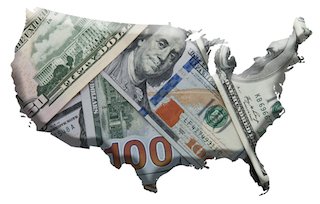While consumers understand insurance as protection against financial loss, the industry’s contribution to the economy goes much further. According to a new white paper released June 5 from the New York-based Insurance Information Institute (I.I.I.), insurance also serves a wide variety of roles that preserve communities and promote overall economic growth.
The white paper, How Insurance Drives Economic Growth, examines how the insurance industry’s extensive contributions benefit all aspects of the U.S. and global economy, especially within safety/security, economic/financial stability and development.
“The insurance industry truly is at the heart of the growth and progress of every modern economy,” says Sean Kevelighan, Chief Executive Officer of the Insurance Information Institute. “Most people realize that the insurance industry is the financial first responder – providing much needed recompense after a disaster. But the industry also plays a number of important roles, quietly, that are vitally important to a modern society.”

Here are a few examples from the paper that demonstrate the ways in which insurers and reinsurers act to drive economic growth:
- Financial First Responders – Insurers restore claimants and beneficiaries quickly and reliably. This lessens the costs of unexpected losses. There is also a ripple effect that benefits those not directly affected by a loss, including supporting businesses that repair damaged vehicles and homes. They, in turn, are helping the economy by paying taxes and keeping people employed. In 2017, the insurance industry paid roughly $1.5 trillion (an average of $125 billion per month) to help claimants and beneficiaries rebuild their lives, properties, and businesses while also getting access to medical care. Health insurers paid $589.9 billion; life/annuity insurers provided $590.3 billion; and property/casualty insurers paid $414.6 billion.
- Risk Mitigators – Insurers sponsor and promote knowledge and activities that save lives as well as protect and preserve property. They employ a wide variety of loss prevention personnel (e.g., safety engineers and fire prevention specialists) to study ways to protect lives and property. On the property side, insurers have evaluated the effectiveness of municipalities’ fire suppression systems and provided incentives to upgrade them. In fact, after Hurricane Charley hit Florida in 2004, modern building codes promoted by the Insurance Institute for Business and Home Safety and property insurers were found to reduce the cost of insured losses by 42% and the frequency of these losses by 60%.
- Partners in Social Policy – Insurance delivers significant social benefits by promoting the common good through auto and workers compensation insurance. For example, nearly every state has enacted a law that requires motorists to purchase auto liability insurance or show proof of financial responsibility to compensate accident victims. As a result of mandatory insurance, drivers are protected from the heavy burdens of financial troubles if accidents occur. In addition, all states have workers compensation laws, requiring workers to be covered for illnesses and injuries arising out of their job, along with lost wages. In 2015, about 135.6 million employees had coverage, arming them with the peace of mind that they’ll be able to sustain themselves financially, even if their health hits an unexpected bump in the road.
- Community Builders – Insurers are among the largest investors of capital in the world, with more than $5.8 trillion in assets under management. Since these investments are essential to insurers’ ability to pay long-term claims, insurers’ investment portfolios often include private and municipal bonds that help finance the growth and prosperity of communities across the country. By supporting state and local governments through the buying and holding of municipal bonds, insurers help to lower borrowing costs that allow for greater investments, reduce tax rates for residents, and bolster job creation and economic growth. In the last decade, financing public works projects with municipal bonds vs. taxable debt (that would have had to pay higher interest) has saved $495 billion.
- Innovation Catalysts – Insurance allows innovators to safely take risks that drive our modern economy, and has acted as a critical driving force underwriting investments in technological breakthroughs, literally across centuries – from steam power to mass production to aviation to automation and information networks to coming advancements in artificial intelligence, nanotechnology and beyond. The global nanotech market is expected to double in value in five years, from $39.2 billion in 2016 to $90.5 billion by 2021. More than 1,600 nano-influenced consumer products are already in the marketplace, and more are being developed, all with the support of insurance.
Through these roles, insurance allows homeowners and small business owners to follow their dreams. In fact, as the white paper states, “Insurance is a necessary precondition for many economic activities that would not – or could not – take place otherwise. Without the guarantee of insurance (and reinsurance), most businesses could not operate as they do today, and construction projects could not go forward. Most consumers would not be perceived as good credit risks and could not borrow money from lending institutions.”
Whether it’s day-to-day ups and downs, or catastrophic events, the insurance industry is committed to demonstrating unwavering resilience and will continue to support individual communities and the overall economy, no matter what lies ahead.
The I.I.I. is a nonprofit, communications organization supported by the insurance industry. Learn more are https://www.facebook.com/iiiorg/ and http://twitter.com/iiiorg












